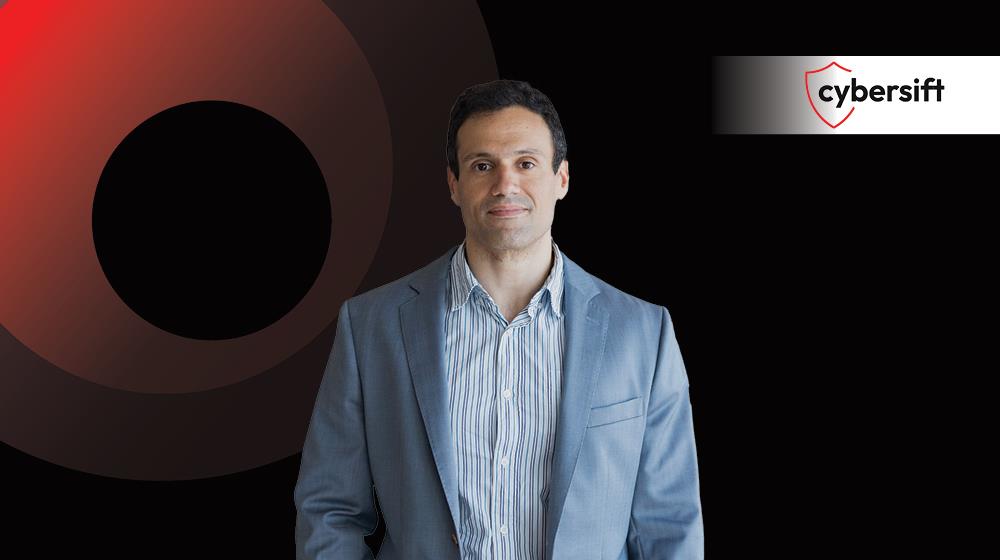According to IBM’s 2024 Cost of a Data Breach Report, the average cost of a data breach reached a record US$4.88 million – up from US$4.45 million in 2023.
Strikingly, around 95% of breaches stemmed from unknown or poorly managed digital assets, also known as shadow or unmanaged IT.
The Missing Piece: Accurate IT Asset Inventory
A modern security strategy begins with visibility. Risk.net’s analysis of the 2023 Citrix Bleed incident underscores this point: many global banks scrambled to patch vulnerabilities – not because patches were unavailable but because they didn’t know which systems were in use or where. In short, they lacked an accurate asset inventory.
Without full visibility, organisations are exposed to unmanaged endpoints, forgotten cloud instances, stale credentials and orphaned services – silent enablers of compromise. Citrix Bleed and its variants, such as CitrixBleed 2, prove how attackers can exploit these blind spots months before organisations detect or respond. These blind spots carry tangible costs – not just in detection and containment but across business disruption, regulatory penalties, customer remediation and lasting reputational damage. In fact, IBM found that lost business and post-breach response alone contributed more than US$2.8 million to average breach costs in 2024. The math is sobering: investing €100,000 in attack surface management can help prevent breaches costing €2–€5 million. The question is no longer whether your business can afford to invest in security – it's whether you can afford not to.
The Invisible Threat Landscape
In Cyprus and beyond, businesses face a growing web of cyber blind spots that traditional security tools consistently miss. These vulnerabilities often hide in plain sight, creating openings that attackers exploit with precision.
1. Shadow IT & Unauthorized Software
Employees frequently install unsanctioned apps – browser extensions, productivity tools or mobile software – without IT approval. These "shadow IT" assets often lack updates or connect to insecure third parties. Legacy software worsens the risk, operating without support or patches. License violations and hidden dependencies introduce cascading vulnerabilities.
2. Network, Cloud & Host Configuration Gaps
Digital transformation introduces complexity. Misconfigured cloud storage (like unsecured Amazon S3 buckets) remains a common cause of breaches. Open ports, unnecessary services, default passwords and policy drift all contribute to exploitable weaknesses.
3. Domain Squatting & Phishing
Typosquatting domains – registered with slight misspellings of your brand – can deceive customers and employees alike. These spoofed domains enable phishing, email impersonation and social media fraud, directly harming trust and reputation.
The Detection Gap
77% of respondents in Deloitte’s 2022–23 ITAM survey agreed that asset management is foundational to cybersecurity. Yet many admitted that lack of visibility and limitations in current tools are their biggest barriers. Manual security audits, often done quarterly or annually, miss real-time changes. New systems launch, configurations drift and assets get forgotten until it’s too late. Most security gaps are only discovered after attackers have already established persistence and exfiltrated data.
Counting the True Cost
Cyber blind spots trigger costs that go well beyond initial response:
Direct costs: Forensics (€50,000–€200,000), legal fees (up to €500,000), GDPR fines (up to 4% of annual revenue), and local regulatory penalties (up to €200,000 from the Cyprus Data Protection Commissioner.
Indirect costs: Reputation loss, customer churn and operational downtime. Acquiring new customers costs 5–25 times more than retaining existing ones. Downtime can cost manufacturers €50,000 per hour and financial services up to €300,000.
The ROI of Prevention
A proactive security investment of €50,000–150,000 per year can yield returns of 10:1 to 50:1 compared to breach remediation costs of €2–€5 million, excluding reputational fallout.
Why All This Matters
Legacy perimeter security models are outdated. Firewalls and intrusion detection systems were designed for fixed networks – not today’s cloud-first, hybrid and remote work environments. Organisational silos worsen the situation. IT asset teams manage resources for compliance and finance – not security. Meanwhile, security teams only scan known assets. The result? Shadow IT escapes both teams’ oversight. Worse still, reactive models wait for attackers to strike. IBM reports a 207-day average dwell time between breach and detection – plenty of time for attackers to escalate privileges, move laterally and exfiltrate data.
Periodic vulnerability scans offer a structured approach to identifying and addressing security weaknesses within an organisation's IT infrastructure. By conducting scans at regular intervals, organisations can proactively detect potential threats and take corrective action before they lead to breaches. This proactive approach significantly reduces the risk of unauthorized access, data theft and other cyber threats. Additionally, regular scans provide a comprehensive assessment of the security posture, enabling organisations to understand the full scope of potential risks and prioritize remediation efforts based on severity and impact. Moreover, many industry regulations and standards require organisations to conduct periodic vulnerability assessments, helping ensure compliance and avoid legal penalties. Addressing vulnerabilities early through regular scans is far more cost-effective than dealing with the aftermath of a data breach, ultimately saving organisations time and money. Furthermore, regular scans contribute to continuous improvement in the organisation's cybersecurity posture by adapting to emerging threats and evolving vulnerabilities. This ongoing process ensures that defences remain strong and up to date in the face of an ever-changing threat landscape.
The Tutela + CyberSift SIEM Advantage
Modern attack surface management is more than visibility – it’s about transforming detection into prevention. Tutela, our attack surface management platform, integrates seamlessly with CyberSift SIEM to create a closed-loop feedback system that strengthens every layer of your security operations.
Continuous Discovery with Context
Tutela identifies systems, services and applications across your cloud, on-premises and hybrid environments. It detects shadow IT, misconfigurations and forgotten systems –assets that legacy tools often miss.
Risk scoring is contextual, factoring in business impact, data sensitivity, exposure level and current threat intelligence. Prioritisation becomes smarter, reducing alert fatigue while focusing your teams on what matters most.
Bidirectional Integration that Powers ProactiveDefense
Together, Tutela and CyberSift SIEM deliver unmatched situational awareness:
Tutela to CyberSift SIEM: Log events from Tutela into your SIEM for long-term auditing and activity reporting, while querying data from a single pane of glass. CyberSift SIEM can also use Tutela for additional context awareness.
CyberSift SIEM to Tutela: Feed activity from your infrastructure into Tutela automatically. The SIEM ensures that Tutela has full visibility by highlighting which IPs are active but may not have been scanned, which IPs have public facing services and so on.
This bidirectional integration forms a powerful feedback loop – Tutela improves threat detection, while CyberSift SIEM strengthens vulnerability management. The result is more resilient, adaptive, and cost-effective security operations.
Implementation Strategy for Cyprus Businesses
1. Assessment Phase
Map your attack surface with automated tools. Identify all assets and evaluate risk based on potential business impact.
2. Technology Deployment
Choose solutions that integrate with your existing security stack. Prioritise platforms offering support for hybrid environments and local compliance.
3. Staff Training & Process Integration
Train security and IT staff on new tools. Define roles, responsibilities and workflows. Foster communication between IT and business teams.
4. Metrics & Continuous Improvement
Track key indicators:
• Time to asset discovery.
• Mean time to patch critical vulnerabilities.
• Number of decommissioned legacy systems.
• Costs avoided through proactive measures.
The Cost of Waiting
Cyber risk compounds with every delay. Attackers use automated tools to discover and exploit vulnerabilities in hours, not weeks.
Now is the time for decisive action. Begin with a comprehensive attack surface assessment. Implement continuous monitoring. Integrate attack surface management with your existing tools like CyberSift SIEM to maximise effectiveness and ROI. Cyprus businesses have access to world-class cybersecurity platforms like Tutela and CyberSift SIEM, developed locally and aligned with European compliance and regional threat trends. The choice is simple: invest in proactive security now or pay exponentially more for reactive damage control later. Your attack surface is expanding. Make sure your security strategy grows with it.
CONTACT INFORMATION
Tel: (+356) 79498471 (Malta) /
(+44) 2086380550 (UK)
e-mail: info@cybersift.io
Website: www.cybersift.com
*David Vassallo, CTO, CyberSift









